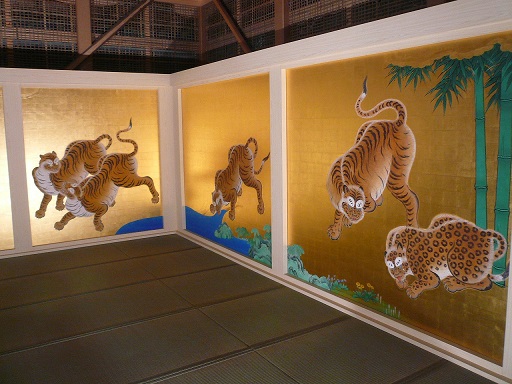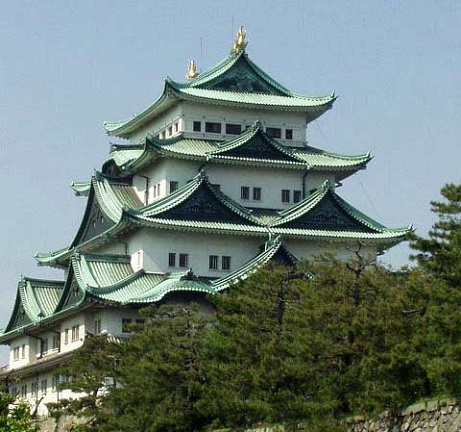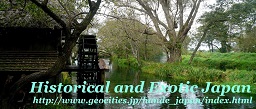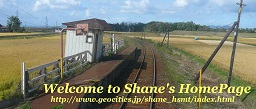The small gate of Omote-Mon was named "Omote Ninomon" and is facing to the Inner Moat.
"Omote Ninomon" and two corner towers are original buildings and designated as national treasures of Japan.
After passing through the Omote-Mon Gate, you will see the castle tower of Nagoya Castle.
The castle tower of the Nagoya Castle was the largest castle building in Japan.
The original castle tower remained until 1944. It was the first national treasure of Japan designated in 1930.
However, the treasure was destroyed by airstrikes during World War II.
The current castle tower of Nagoya Castle was rebuilt in 1959.
The appearance of the rebuilt castle tower was designed to be the same as the original one.
In front of the castle tower, the palace building was built in 1655 in order for the third "Shogun", TOKUGAWA Iemitsu to stay in Nagoya Castle on his way from Edo (currently Tokyo) to Kyoto.
The palace building also remained until 1944. It was also destroyed by airstrikes during World War II.
Painting on "Fusuma" of Palace Building

Currently, the wooden main palace building is being rebuilt using traditional crafts. It will be completed by 2018. The pictures of fusuma are also being remade.
To the northwest of Inner Bailey, "Ofuke Maru" Bailey is located. The Northwest Corner Tower is also an original building. It is said that the Northwest Corner Tower was the castle tower of Kiyosu Castle. The three-storied corner tower was larger than many other castle towers buildings.
As the location of Nagoya was very important for TOKUGAWA Bakufu, a son of "Shogun", TOKUGAWA Ieyasu was assigned as the first lord of the Nagoya Castle and Owari Domain was designated as one of the three branch TOKUGAWA families' domains.

 Home Page in Japanese: "Shane's HomePage"
Home Page in Japanese: "Shane's HomePage"

 Home Page in Japanese: "Shane's HomePage"
Home Page in Japanese: "Shane's HomePage"